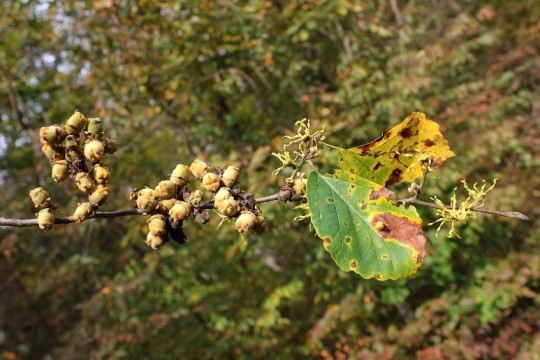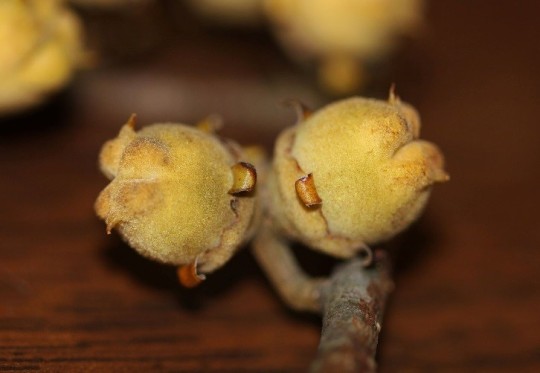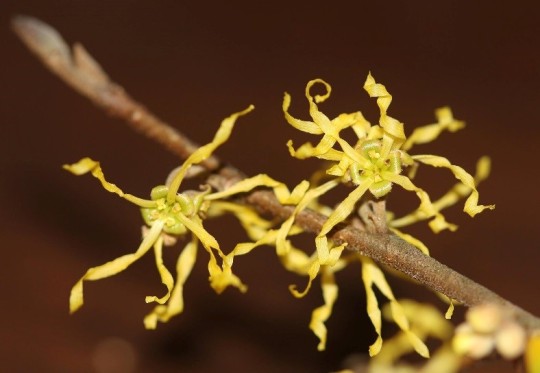by Andrea Kautz

At this point in the year, there aren’t many blooms to be seen on a crisp hike through the woods. However, now is the perfect time to find Common witch hazel (Hamamelis virginiana) both flowering and fruiting!

Hamamelis, from the Greek words meaning “together” and “fruit,” refers to the presence of fruits and flowers at the same time. The velvety fruits you see on witch hazel at this time of year are actually from the flowers that bloomed a year ago. Once ripe, the fruit pops open and the shiny black seeds are forcibly ejected up to 30 feet away! This method of seed dispersal gives the witch hazel another common name, snapping hazelnut. The plant is medically useful for problems of the digestive tract, insect bites, minor burns, skin irritation, or colds and fevers.

While this species of witch hazel is one of the last woodland plants to bloom, the Chinese species of witch hazel is one of the first of the year to bloom in late winter, making this delightful group of plants a real rule-breaker! Be sure to keep an eye out for the curly yellow petals of the witch hazel flower on your next fall or winter hike!
Andrea Kautz is a Research Entomologist at Carnegie Museum of Natural History’s Powdermill Nature Reserve. Museum employees are encouraged to blog about their unique experiences and knowledge gained from working at the museum.
